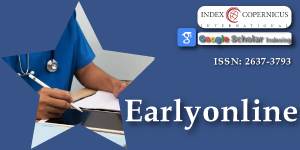Characterization of Genotoxic Impurities with LC-QTOF and RP-HPLC Methods, Including Different Swab Methods in Cleaning Validation
Main Article Content
Abstract
While cleaning agents used in cleaning validation studies eliminate product residues, they can create another contamination with their own residues. This study aims to develop a new, more economical, and easy-to-apply strategy that can achieve sharp peaks by using the UV-RP-HPLC method in cleaning validation studies on different surfaces and the swab method in cleaning validation studies. The content of the cleaning agent used in cleaning validation studies was characterized by mass spectroscopy (LC-QTOF-MS). According to the International Council for Harmonization, a new, easy-to-apply method for propylbenzene sulfonate detected in the cleaning agent composition was developed and verified by the UV-RP-HPLC method. PMMA, POM, Teflon, and glass plate surfaces were used for the swab method. The residue limit was calculated at 71.4 µg/mL. The absence of any cleaning validation studies using specific plate surfaces such as PMMA, POM, Teflon, and glass for propyl benzene sulfonate as a genotoxic impurity, characterized by LC-QTOF-MS and swab method in the current literature, supports the innovative contribution of our study. Validated according to the ICH Q2 (R1) guideline, this method showed linearity, precision, accuracy, solution stability, and system suitability results within acceptance criteria.
Article Details
Copyright (c) 2025 Ergen H, et al.

This work is licensed under a Creative Commons Attribution 4.0 International License.
1. Zayas J, Colon H, Garced O, Ramos LM. Cleaning validation 1: development and validation of a chromatographic method for the detection of traces of LpHse detergent. J Pharm Biomed Anal. 2006;41:589–593. Available from: https://doi.org/10.1016/j.jpba.2005.10.049
2. Parabu SL, Suriyaprakash TNK. Cleaning validation and its importance in pharmaceutical industry. Pharma Times. 2010;42:620–624. Available from: https://www.researchgate.net/publication/281742872_cleaning_validation_and_its_importance_in_pharmaceutical_industry
3. Ghosh A, Dey S. Overview of cleaning validation in pharmaceutical industry. Int J Pharm Qual Assur. 2010;2:26–30. Available from: https://www.researchgate.net/publication/286331514_Overview_of_Cleaning_Validation_in_Pharmaceutical_Industry
4. Resto W, Hermández D, Rey R, Colón H, Zayas J. Cleaning validation 2: development and validation of an ion chromatographic method for the detection of traces of CIP-100 detergent. J Pharm Biomed Anal. 2007;44:265–269. Available from: https://doi.org/10.1016/j.jpba.2007.01.037
5. Walsh A. Cleaning validation for the 21st century. Acceptance limits for active pharmaceutical ingredients (APIs): Part I. Pharm Eng. 2011;4. Available from: https://www.researchgate.net/publication/262875575_Cleaning_Validation_for_the_21_Century_Acceptance_Limits_for_Active_Pharmaceutical_Ingredients_APIs_Part_I
6. Wolkoff P, Schneider T, Kildesø J, Degerth R, Jaroszewski M, Schunk H. Risk in cleaning: chemical and physical exposure. Sci Total Environ. 1998;215:135–156. Available from: https://doi.org/10.1016/s0048-9697(98)00110-7
7. Milenovic DM, Pesic DS, Mitic SS. Non-specific methods for detecting residues of cleaning agents during cleaning validation. Chem Ind Chem Eng Q. 2011;17:39–44. Available from: https://doi.org/10.2298/CICEQ100524051M
8. Yirun A, Erkekoğlu P, Gumusel BK. Cleaning validation and toxicological evaluation of residue levels in pharmaceutical manufacturing. J Lit Pharm Sci. 2018;7:227–236. Available from: https://doi.org/10.5336/pharmsci.2018-61200
9. U.S. Food and Drug Administration. Guide to inspections of validation of cleaning processes. 2014. Available from: https://www.fda.gov/validation-cleaning-processes-793
10. Health Canada. Cleaning validation guidelines (GUIDE-0028). 2008. Available from: https://assets.ctfassets.net/a44nqpvb9zjg/78mndAlqro9UU1jGjZFZ9f/590f73df600ae18473ae2d7f23805f85/Health_Canada_GUI-0028_EN.pdf
11. Govind RP, Kant ARK, Tanuj J, Dheeraj B. A review on cleaning validation in pharmaceutical industry. J Drug Deliv Ther. 2018;8:138–146. Available from: https://jddtonline.info/index.php/jddt/article/view/1695
12. International Council for Harmonisation of Technical Requirements for Pharmaceuticals for Human Use (ICH). Q2(R1) validation of analytical procedures: text and methodology. Current Step 4 version, parent guideline dated 27 October 1994. Available from: https://database.ich.org/sites/default/files/Q2%28R1%29%20Guideline.pdf
13. Manu C, Gupta NV. Review on cleaning validation in pharmaceutical industry. Int J PharmTech Res. 2016;3:415–421. Available from: https://sphinxsai.com/2016/ph_vol9_no3/2/(415-421)V9N3PT.pdf
14. Snodin DJ, Teasdale A. Mutagenic alkyl-sulfonate impurities in sulfonic-acid salts: reviewing the evidence and challenging regulatory perceptions. Org Process Res Dev. 2015;19(11):1465–1485. Available from: https://pubs.acs.org/doi/abs/10.1021/op500397h
15. Elder DP, Snodin DJ. Drug substances presented as sulfonic acid salts: overview of utility, safety and regulation. J Pharm Pharmacol. 2009;61:269–278. Available from: https://doi.org/10.1211/jpp/61.03.0001
16. Firke SD, Kasar SR, Shirkhedkar AA, Sonar VP. Analysis of alkyl, aryl sulphonate ester – genotoxic impurities (GIS) in active pharmaceutical ingredient (API’s) and drug product. Am J PharmTech Res. 2020;10(3). Available from: https://www.ajptr.com/
17. Liu L, Pack BW. Cleaning verification assays for highly potent compounds by high performance liquid chromatography mass spectrometry: strategy, validation, and long-term performance. J Pharm Biomed Anal. 2007;43:1206–1212. Available from: https://doi.org/10.1016/j.jpba.2006.10.008
18. Arayne MS, Sultana N, Sajid SS, Ali SS. Cleaning validation of ofloxacin on pharmaceutical manufacturing equipment and validation of desired HPLC method. PDA J Pharm Sci Technol. 2008;62:353–361. Available from: https://pubmed.ncbi.nlm.nih.gov/19055231/
19. Yildirim F, Ekmekci I. Design of analytical method validation protocol evaluating environmental monitoring of AND contamination on surfaces based on cleaning validation procedures: a multi-component RP-UHPLC method. J Chromatogr Sci. 2022;60:926–936. Available from: https://doi.org/10.1093/chromsci/bmac071
20. European Medicines Agency (EMA). Guideline on setting health-based exposure limits for use in risk identification in the manufacture of different medicinal products in shared facilities. 2014. Available from: https://www.ema.europa.eu/en/documents/scientific-guideline/guideline-setting-health-based-exposure-limits-use-risk-identification-manufacture-different-medicinal-products-shared-facilities_en.pdf
21. European Commission. EU guidelines for good manufacturing practice for medicinal products for human and veterinary use, Annex 15: qualification and validation. 2015. Available from: https://www.gmp-compliance.org/files/guidemgr/2015-10_annex15.pdf
22. Active Pharmaceutical Ingredients Committee (APIC). Guidance on aspects of cleaning validation in active pharmaceutical ingredient plants. 2021. Available from: https://apic.cefic.org/wp-content/uploads/2021/09/APIC_Cleaning-validation-guide_2021.pdf





